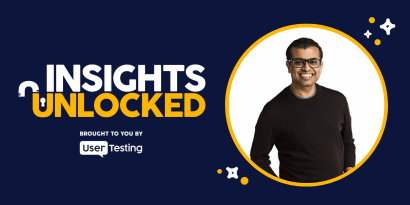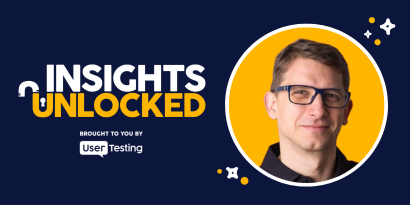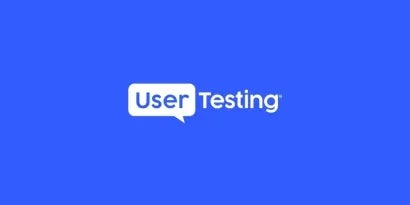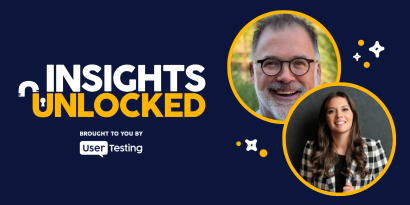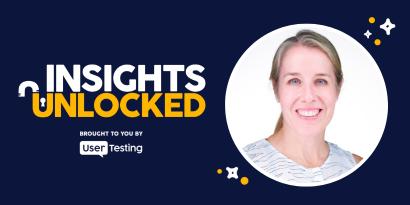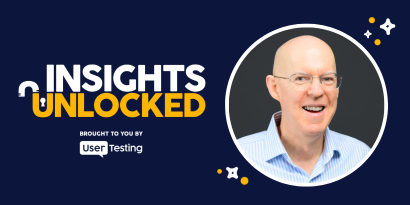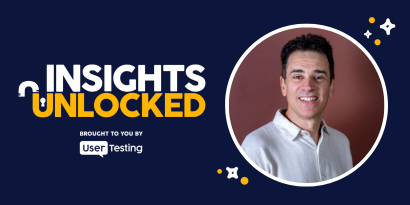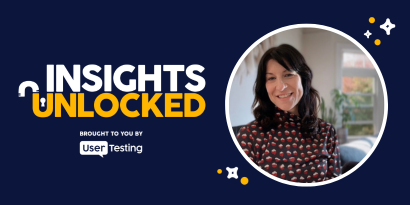
Episode 143 | November 04, 2024
Next level your research: from analysis to actionable insights with Steve Portigal
Learn from Steve Portigal how to move from analysis to synthesis in UX research to deliver actionable insights that resonate with stakeholders and drive decisions.
Next level your research: from analysis to actionable insights with Steve Portigal
The world of UX research has undergone a major transformation over the past two decades, and few are better positioned to discuss these changes than Steve Portigal.
In a recent episode of the Insights Unlocked podcast, Portigal talked with UserTesting's Lija Hogan, sharing his expert perspective on how remote research, the rise of in-house research teams, and the distinction between analysis and synthesis are shaping the future of the field.
The power of synthesis in research
In UX research, the real impact doesn’t come just from gathering data—it’s about transforming that information into insights that stakeholders can act upon. This transformation lies in the distinction between analysis and synthesis, a key theme Steve explored in the interview. While both are essential, Steve emphasized that synthesis is where true insights emerge, pushing beyond the surface level to reveal a deeper understanding of user behavior and needs.

"Synthesis is like an alchemical process," Steve explained. "It's not just about reporting what people said, but creating frameworks that point the way forward."
In his view, analysis and synthesis serve very different purposes. Analysis involves breaking down data into smaller, organized parts to identify what was observed. Researchers might categorize responses, note recurring themes, or quantify behaviors and preferences to understand what happened and how frequently.
But synthesis goes further, requiring researchers to recombine and interpret these pieces, creating a holistic view that answers "why" and "what next."
"Synthesis is not just about reporting what people said, but creating new frameworks that drive action." – Steve Portigal
According to Steve, synthesis involves a creative element that often requires more time and freedom to explore relationships within the data. This step is what allows researchers to uncover patterns, mental models, and frameworks that can lead to actionable insights. “You’re looking for ways to combine data into something that highlights a new perspective or reveals a solution,” he said.
Steve acknowledged that synthesis requires intentional effort and time—elements researchers must advocate for. "If we don’t ask for the time, we never get it," he noted. Without recognizing synthesis as a distinct and necessary phase, researchers may risk limiting their role to mere data collection. Steve warned that in such cases, researchers might act more like "stenographers," merely reporting what participants said without generating deeper insights.
Ultimately, synthesis allows researchers to present insights in a way that aligns with organizational goals, creating a narrative that stakeholders can connect with and act on. As Steve put it, “Setting yourself the intention of not just reporting what people said, but creating a new framework or model, will shift your approach.” This intentional shift toward synthesis, he argues, is what moves UX research from observation to actionable insight, making it indispensable for guiding product decisions and innovation.
The shift to remote-first research
"Remote research is the default now," Steve noted early in the conversation. While remote methods existed long before the pandemic, COVID-19 made them the norm.
Remote research has clear benefits, including increased inclusivity and flexibility for participants and teams.
However, Steve cautions that the shift comes with potential downsides: "There’s a richness to being in the same room with users... experiences that change us as researchers." His balanced view highlights the need for thoughtful application of remote and in-person methods, ensuring we don't lose the deep insights gained from face-to-face interaction.
"Remote research allows us to include people we wouldn’t have been able to before, but if we never go into the world, we risk losing out on experiences." – Steve Portigal
The rise of in-house research teams
Another significant change in the industry is the transition from agencies to in-house research teams.
According to Steve, this shift has brought research closer to the decision-making process, but it also creates new challenges, particularly in maintaining objectivity. "When research is a core function instead of an external advisory, it changes the dynamics of speaking truth to power," he explained.
This dynamic can make it harder for researchers to deliver unbiased insights when they're part of the organization they’re researching for.
Looking to the future of UX research
As the field continues to grow, Steve envisions a future where research may drive business decisions even more directly. He posed an intriguing question about the potential for research-led companies, where user research forms the core of innovation strategies. While the idea is still a "fantasy" in many ways, it’s clear that research will continue to play a key role in shaping the products and services of the future.
Steve leaves us with a valuable reminder about the importance of intention in research: “We don’t always know what we don’t know... but if we create space for synthesis and exploration, we open the door to deeper insights and bigger breakthroughs.”
Episode links:
How to master remote UX research: Learn the essentials of remote user research, from setup to best practices.
Eight expert tips for transitioning to remote user research: Practical tips for conducting remote research effectively in today's landscape.
Drive customer-centric design with remote research: A webinar on embedding customer feedback in remote research methods.
Remote testing and feedback: the key to customer empathy: This article explores how remote testing can enhance customer empathy in product design.
What is Remote Usability Testing?: An introduction to remote usability testing and its benefits for UX research.
BOOK: Interviewing Users
- BOOK: Doorbells, Danger, and Dead Batteries
- PODCAST: Dollars to Donuts
